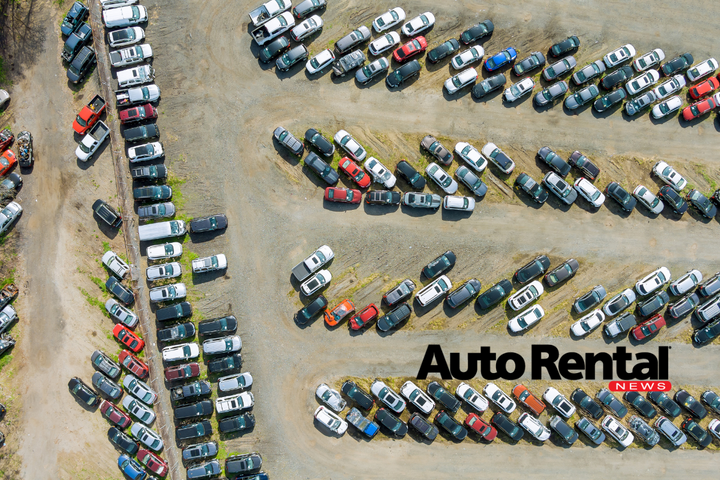
The days of marshalling vehicles at a physical auction yard are waning. New forms of virtual auctions allow buyers and sellers to attend multiple auctions in one day and for sellers to expand their buyer base — including overseas.
Canva
The pandemic has sped up the move to virtual and digital solutions, including in the fleet remarketing and auto auction industries.
At the 2023 International Car Rental Show, a panel of experts looked at recent trends in the auction world from both the auction and rental fleet sides.
For Michael DeLorenzo, selling or buying rental cars used to consist of spending an entire day at the auction buying or selling vehicles.
“You would have to drive or ship the vehicles a couple of weeks ahead of the auction so they could go through a cleanup process to present them properly,” said DeLorenzo, executive vice president of NP Auto Group. “Then you would have a representative from your company to represent the cars on the block.”
Now with technology and digital tools, car auctions can happen all online.
Years prior to the pandemic, vehicle auction company Copart decided to go 100% virtual. “In 2003, the Internet was still fairly new, but being online opened up all kinds of doors for Copart,” said Jim Miller, Copart’s senior director of sales. “Buyers could get 10 auctions up on their desktops and make bids on the cars right from their desks.”
Over the years, Copart’s technology has evolved to help simplify the auction process, reduce the vehicle cycle time, and ultimately bring a higher return for its sellers.
Advantages to Going Virtual
Virtual auctions open the door to the international market. “Today, 40% of the vehicles that Copart sells online leave the country,” said Miller. “Ultimately, it brings higher returns for our sellers by bringing in the international market.”
Users can attend multiple auctions per day – when participating online.
“You can buy two cars in Ohio, two cars in Illinois, two cars in Pennsylvania, and four cars in Virginia,” said DeLorenzo. “You can order trucks and have them all delivered within a week. Compared to having to drive to one auction and spend the day there, it’s a lot more flexible going to auctions online.”
Additionally, it can be easier overall to buy or sell vehicles at virtual auctions. “Virtual auctions work exactly the same as physical auctions, but the whole process is streamlined on the seller side,” said DeLorenzo. “After the car is dropped off at the auction company, they handle the whole process.”
Differences in Auctions Today
Because you can’t see the vehicles in person, quality images are very important for online auctions. At Copart, employees take 12 images of a vehicle from different angles. “We focus on taking images of the whole cockpit of the vehicle’s interior,” said Miller. “Then if it’s an SUV or a minivan, we take 14 images to also focus on the third row, so buyers know it’s in good condition.”
Occasionally, you could receive a vehicle with damage that wasn’t properly disclosed. Depending on the auction company, you usually have one week to 10 days to complete an inspection and submit your arbitration claim. But you need to report any damage, according to DeLorenzo.
“There have been times where we didn’t follow up with the cars fast enough,” he said. “We weren’t able to inspect them fast enough because we didn’t have enough people. So, we got stuck with some cars, but that was on us because we weren’t managing the program print correctly.”
Additionally, vehicle reconditioning isn’t required for auctions like it used to be. For NP Auto Group, it has moved away from doing reconditioning work and sells its vehicles at auction like it would rent a vehicle to a customer – each vehicle receives a cleanup.
“We’ve stopped doing any kind of reconditioning or prep work on the vehicles,” said DeLorenzo. “We used to spend thousands on recon, but now we just sell everything as is. The market just doesn’t require that level of refinement anymore.”
Looking Forward
With the rise of electric vehicles at auction, Copart has started storing the EVs in a separate area to avoid any risk of fire. “When it comes to Teslas specifically, with the battery situation, we store those cars in a completely different area of our yard and space them apart,” said Miller. “Because if one does catch fire, there’s a high risk of it spreading to the other cars.”
For the future of car auctions, DeLorenzo sees the auction company coming to your facility, doing the photos and inspections, and posting the vehicle for sale – right where it sits.
“I envision that there’ll be an app with some type of photo software on it where you’re just going to do a walk-around,” he said. “Then you can convert that movie into still shots. And you’re going to disclose the whole car where it is; you don’t even have to move it from your facility.”
If the auction company comes to you, then auction firms would need less facilities since their inventory would be dispersed all over, and the vehicles wouldn’t need to be shipped, according to DeLorenzo.
“The buyer would decide whether to make a bid on a car after looking at pictures online and seeing its estimated shipping cost,” he said.
In the near future, NP Auto Group is planning to shift from purchasing used vehicles to buying new vehicles for its fleet.
“Because there will be a lower supply of used vehicles the next four to five years, we are shifting to purchasing new vehicles but not in the U.S.,” said DeLorenzo. “We won’t be purchasing in the U.S. market because the prices are so high right now. It’s difficult to manage the depreciation and value with the prices that the U.S. cars are bringing right now.”
Photo: Canva
